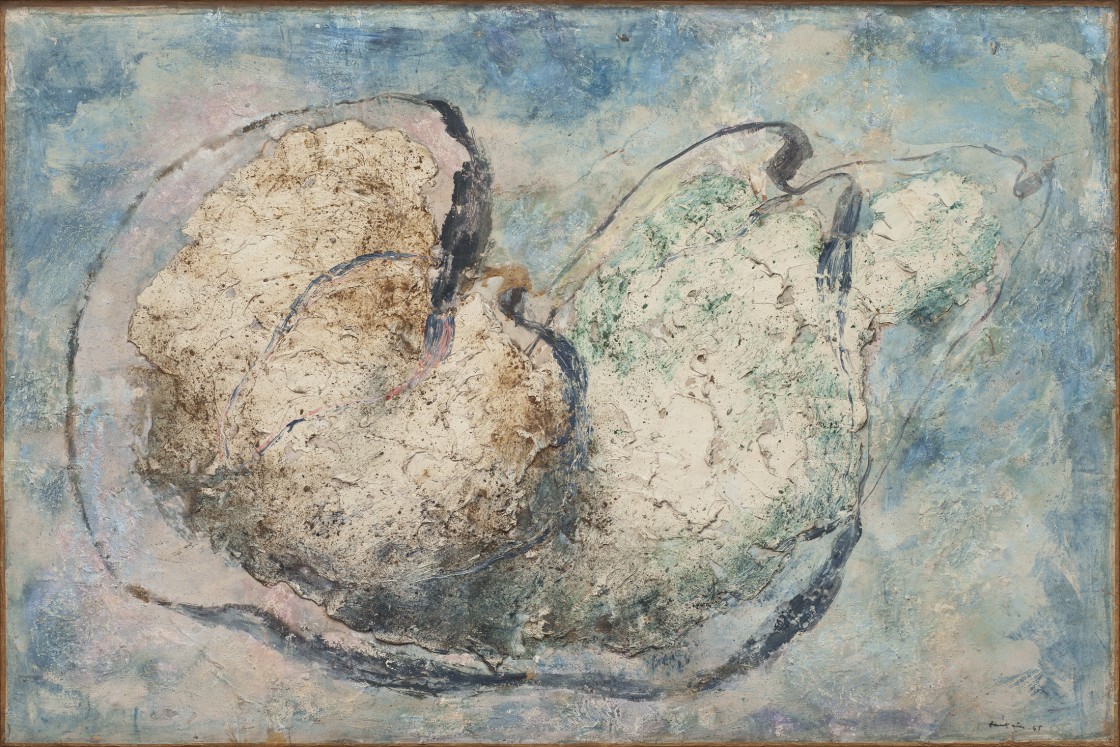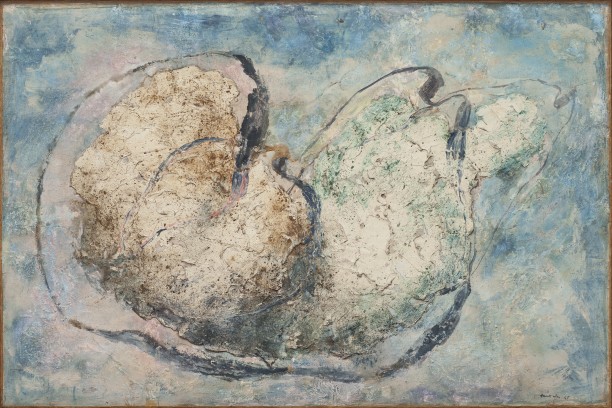Dépouille
1945

-
Medium
Mixed media on paper mounted to linen
-
Dimensions
Frame (wood shadow box): 39 1/2 x 59 x 2 3/4 in. (100.33 x 149.86 x 6.99 cm)
39 1/2 x 59 x 2 3/4 in. (100.33 x 149.86 x 6.99 cm)
Image: 38 x 57 1/4 in. (96.52 x 145.42 cm) -
Credit
The Museum of Contemporary Art, Los Angeles
The Panza Collection -
Accession number
86.8
-
Object label
In 1943, while producing his Otages (Hostages) series, Jean Fautrier hid from the Gestapo in a psychiatric asylum outside Paris. At night he heard gunfire in the surrounding woods as Nazi authorities massacred French civilians. Given this painting’s lurid title, Dépouille, meaning “skin” or “human remains,” and the horrific context of the series to which it belongs, viewers might be surprised to encounter a nebulous abstract form and an appealing, frothy palette. However, what this signals is a conundrum: how should a visual artist address Nazi atrocities without sensationalizing them? Fautrier’s strategy was to indicate violence in his handling of materials, rather than through traditional figurative means. He created Dépouille by smearing a stuccolike white paste across a layered paper surface, then sprinkling pastel powders on the central shape, loosely delineated in blue brushstrokes. It is the painting’s rough, scored, cracked matter above all that portrays the brutalization of bodies.
